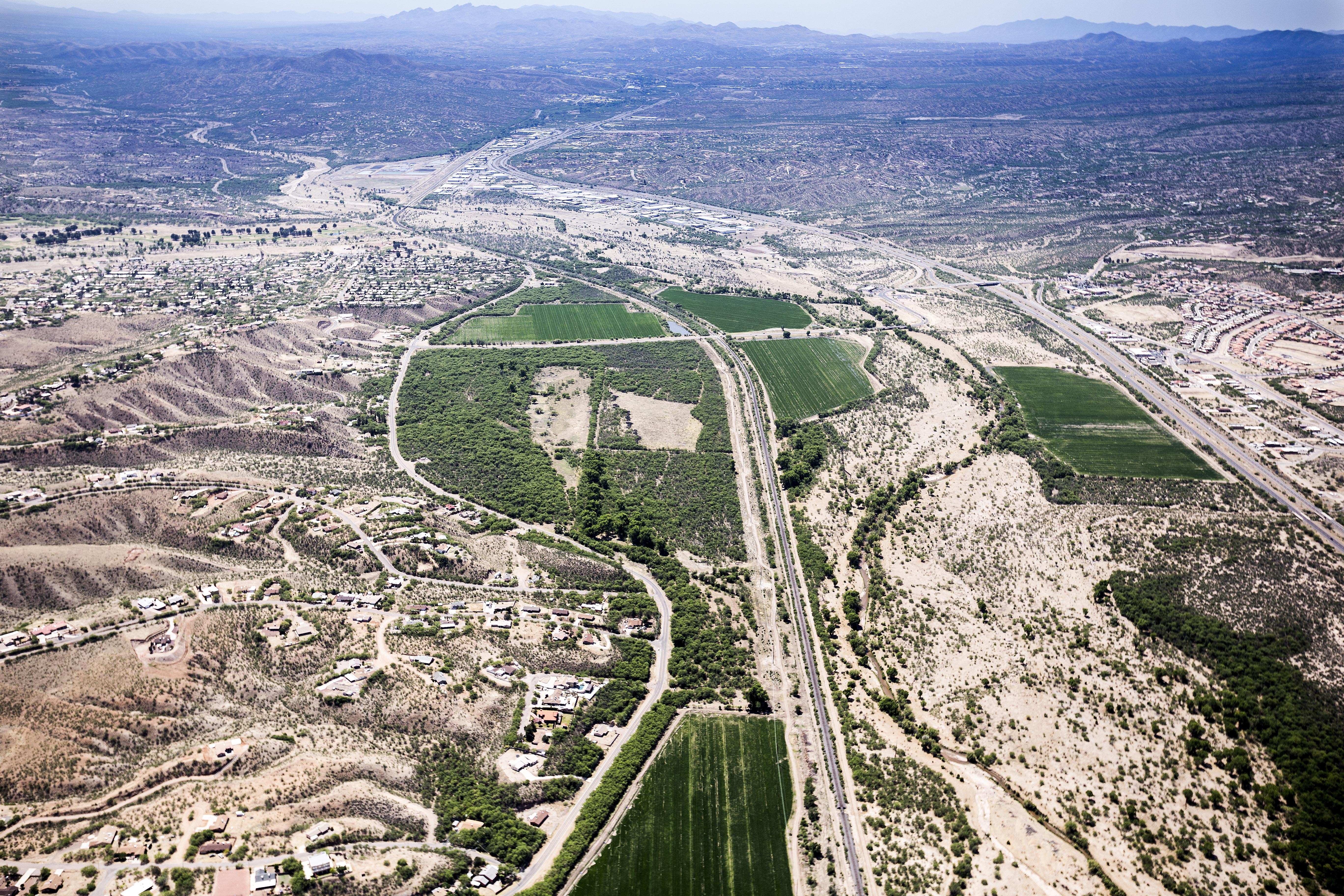What is a river to a desert? A source of life, a safe haven for plants and animals, perhaps a place to have your next weekend picnic? How about all of those things.

The Santa Cruz River, a binational watershed – from the U.S. state of Arizona to the dry deserts of Sonora, Mexico and back – is an important local resource to many. However, what we might not comprehend is that this desert river was the lifeblood to regional Native Americans, rancheros and outlaws alike in what would have been an unforgiving climate without the hope of this wet sanctuary. It epitomizes what we like to say here at Sonoran Institute: “water is life”. In the present, we can’t see this remarkable past. But next time you drive, bike or walk near the heart of downtown Tucson, we encourage you to look at the Santa Cruz River as more than (what appears to be) a flash flood basin, but as a Living River whose history and purpose runs deeper than our groundwater table. In fact, why don’t you let us help you envision this…
The Living River project, a joint initiative of the Sonoran Institute and Pima County, is a baseline study on the Lower Santa Cruz River with inspiration from our years of research on the Upper Santa Cruz River. This particular project aims to assess the wetland conditions created and affected by effluent

(treated wastewater) that has been recharging the river for decades. Back in 2013, Pima County invested over $600 million to upgrade their water reclamation facilities. Since then, we’ve been tracking and monitoring the changes and improvements with respect to native fish, water quality, and the overall enjoyability of the river (like being able to walk/bike along the river and have it smell like fresh water, not rotten eggs). From a dried riverbed to a once-again thriving ecosystem, and valued community amenity – the Lower Santa Cruz River has become a model for using scarce water resources in innovative ways.

We can talk about how awesome this joint initiative is all day long, but the only way we can sustain such efforts is by capturing the attention of our public constituents and community members. You are the true reason why we do what we do here – because ultimately, the community benefits from the long hours of work we put into restoring our Santa Cruz River. That’s why we hold annual events like our Living River Celebration every April. This event allows you the opportunity to take a microscopic look at life in the river and enjoy its beautiful scenery. In addition to this, you’ll get to see Arizona’s future conservationists in action as they show off their artwork for the “Living River of Words: Youth Poetry and Art Traveling Exhibit”. This special feature is the culmination of a program that encourages young people to explore how water moves through the landscape and the connections that plants, animals and people have to water. The program takes students to the Santa Cruz River (often for the first time) and engages them in science-based activities. These opportunities allow them to reflect on the role of the river in their community through the creation poetry or art entries for the contest we showcase as the “Living River of Words”. What’s more awesome than that – witnessing the remarkable talent of our future generation and their vision for a sustainable water future!
Our public engagement work doesn’t stop here though. We are continually trying to educate the community by sharing a bit more about the science and research that is involved in the project. In fact, this month we’ve held our 8th Annual Santa Cruz River Research Days and given two presentations in and around the Tucson community. We encourage you to attend events like these because the future direction of our Living River project is entirely dependent on your support.
Blog Post By: Elizabeth Stowe, Sonoran Institute

Elizabeth Stowe is a Marketing and Communications Associate at the Sonoran Institute. She is earning her Bachelor’s of Science in Sustainable Built Environments at The University of Arizona’s College of Architecture in Tucson and is expected to graduate in May 2016. She has professional experience in communications, photography, environmental compliance and legal research. Her work at Sonoran involves managing the organization’s social media accounts and website, helping facilitate various marketing initiatives and providing administrative assistance to the communications team.
